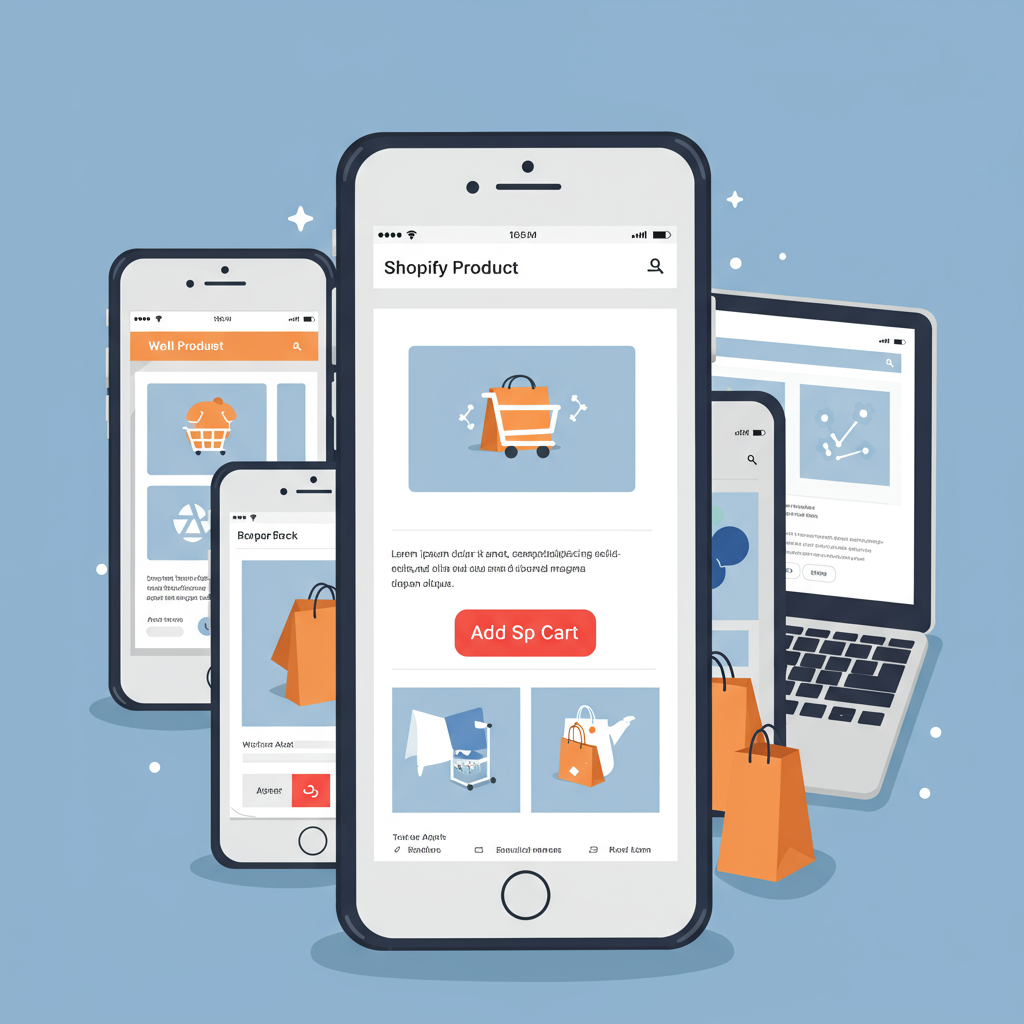Unlocking E-commerce Success in a Mobile-Dominated World
As a Shopify merchant myself, I’ve witnessed firsthand the incredible shift in how customers interact with online stores.
The world has undeniably gone mobile, and if your e-commerce strategy isn’t reflecting that, you’re likely leaving a lot of money on the table.
Think about it: when was the last time you made a significant purchase online without at least browsing on your phone first?
Statistics consistently show that over half of all e-commerce traffic now originates from mobile devices.
This isn’t just a trend; it’s the new standard.
If your Shopify store isn’t optimized for these mobile users, you’re not just inconveniencing them; you’re actively pushing them away.
That’s why I’m a staunch advocate for adopting a mobile-first design strategy for your Shopify store.
It’s not merely about making your desktop site shrink to fit a smaller screen.
True mobile-first design means you’re building your store with the smallest screen in mind from the very beginning.
This approach forces you to prioritize content, streamline user experience, and focus on what truly matters to a mobile shopper.
One of the core principles I always emphasize is content prioritization.
On a small mobile screen, every single pixel counts.
You need to ruthlessly identify your core message, your essential product information, and your primary call-to-actions.
Anything that doesn’t serve a direct purpose for the mobile user should be reconsidered or de-emphasized.
Another critical aspect is speed.
Mobile users are notoriously impatient; slow loading times are a death knell for conversions.
I always recommend optimizing images, leveraging browser caching, and minimizing unnecessary scripts to ensure your store loads lightning-fast.
Your choice of Shopify theme is absolutely crucial in this endeavor.
Always select a theme that is inherently responsive and built with mobile performance in mind.
Many modern Shopify themes are designed this way, but it’s vital to test their demos on your own phone before committing.
Even with a great theme, image optimization is key.
High-resolution images are fantastic for showcasing products, but not at the expense of speed.
While Shopify does some automatic image optimization, I always recommend compressing your images before uploading them.
Tools like TinyPNG or Compressor.io can make a huge difference without sacrificing visual quality.
Next, let’s talk about navigation.
Mobile navigation needs to be intuitive, simple, and easy to use with a thumb.
The ubiquitous hamburger menu is your friend here, but ensure its icon is clear and its contents are well-organized.
Your call-to-action (CTA) buttons are equally important.
Make sure they are large enough to be easily tappable, with sufficient padding around them to prevent accidental clicks.
Product pages are conversion hotspots, and they need special attention on mobile.
Keep your product descriptions concise and scannable, using bullet points for key features.
Use high-quality, zoomable product photos that load quickly.
And, of course, make the ‘Add to Cart’ button prominent and easy to find.
The checkout process is where many potential sales are lost due to friction.
For mobile users, I always advise streamlining this as much as possible.
Offer guest checkout options, enable autofill for forms, and integrate popular mobile payment options like Shop Pay, Apple Pay, or Google Pay.
I cannot stress this enough: test, test, test!
Once you’ve made changes, test your Shopify store on various mobile devices, screen sizes, and operating systems.
Borrow friends’ phones, use browser developer tools, and ensure a consistent, smooth experience across the board.
Don’t hesitate to explore Shopify’s App Store for mobile optimization tools.
There are many apps designed to help with image compression, page speed, and even mobile-specific pop-ups or banners.
Finally, don’t forget about accessibility.
Ensure sufficient color contrast, readable font sizes, and proper alt text for images.
A mobile-first store should be usable by everyone.
Once your mobile-first store is live, continuously monitor its performance using Shopify Analytics and Google Analytics.
Pay attention to bounce rates, conversion rates, and time spent on pages for mobile users.
Continuously iterate and improve based on the data you collect.
What are your biggest challenges when optimizing your Shopify store for mobile?
Embracing a mobile-first approach isn’t just a trend; it’s a fundamental shift in how we approach e-commerce.
It’s about putting your customer’s experience first, especially those on the go.
By focusing on speed, simplicity, and user-friendliness, you’ll not only meet customer expectations but exceed them.
Start optimizing your Shopify store for mobile today, and watch your conversions soar.






